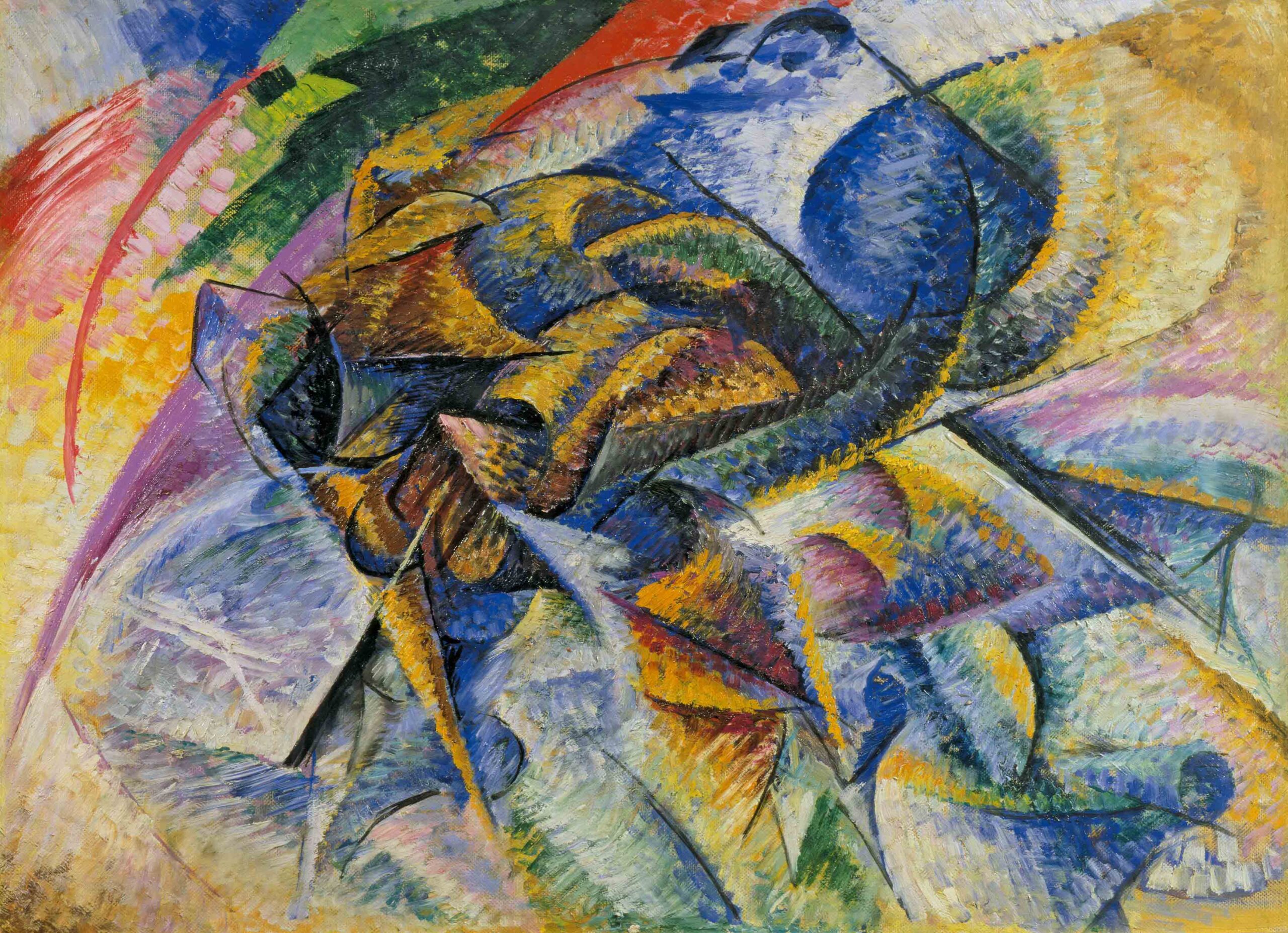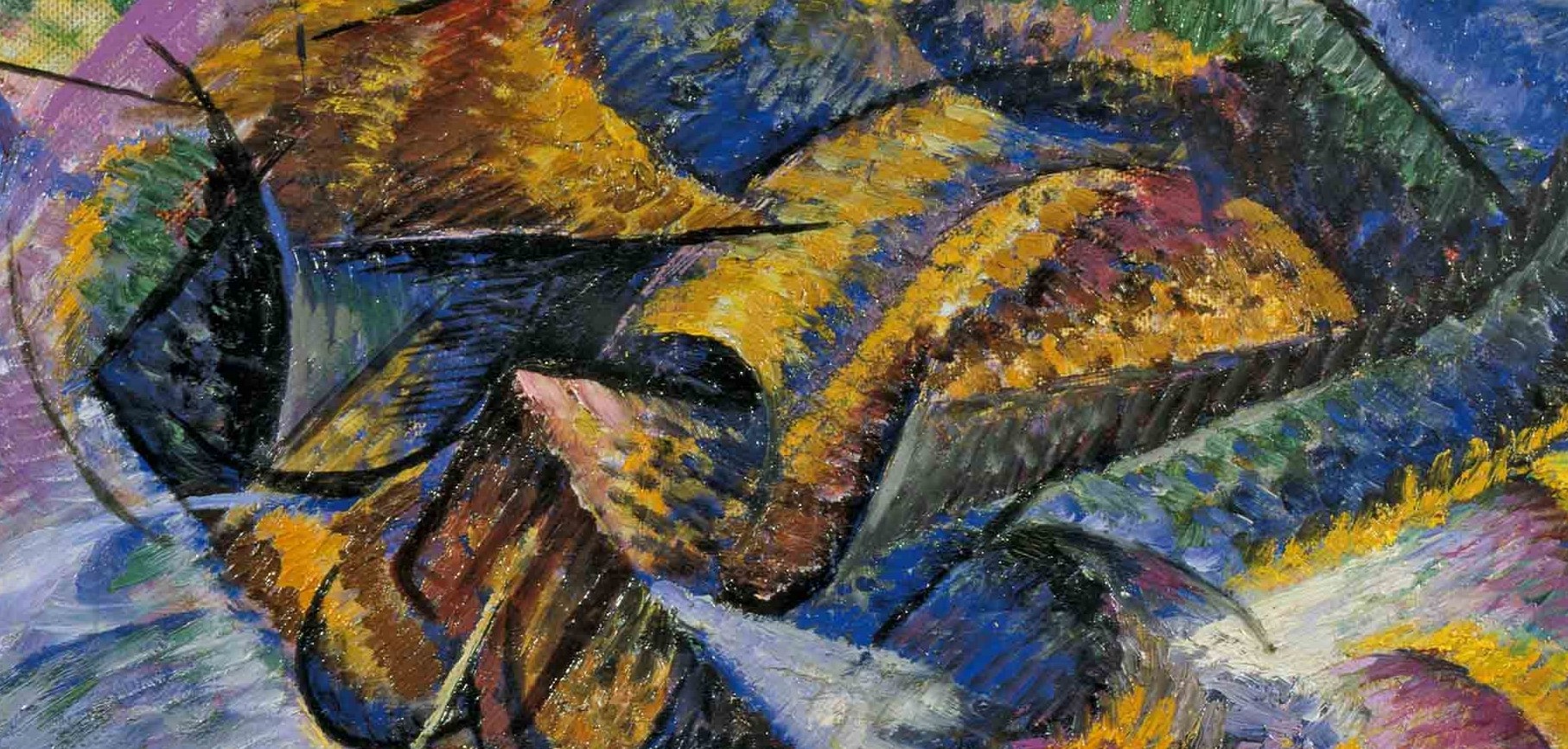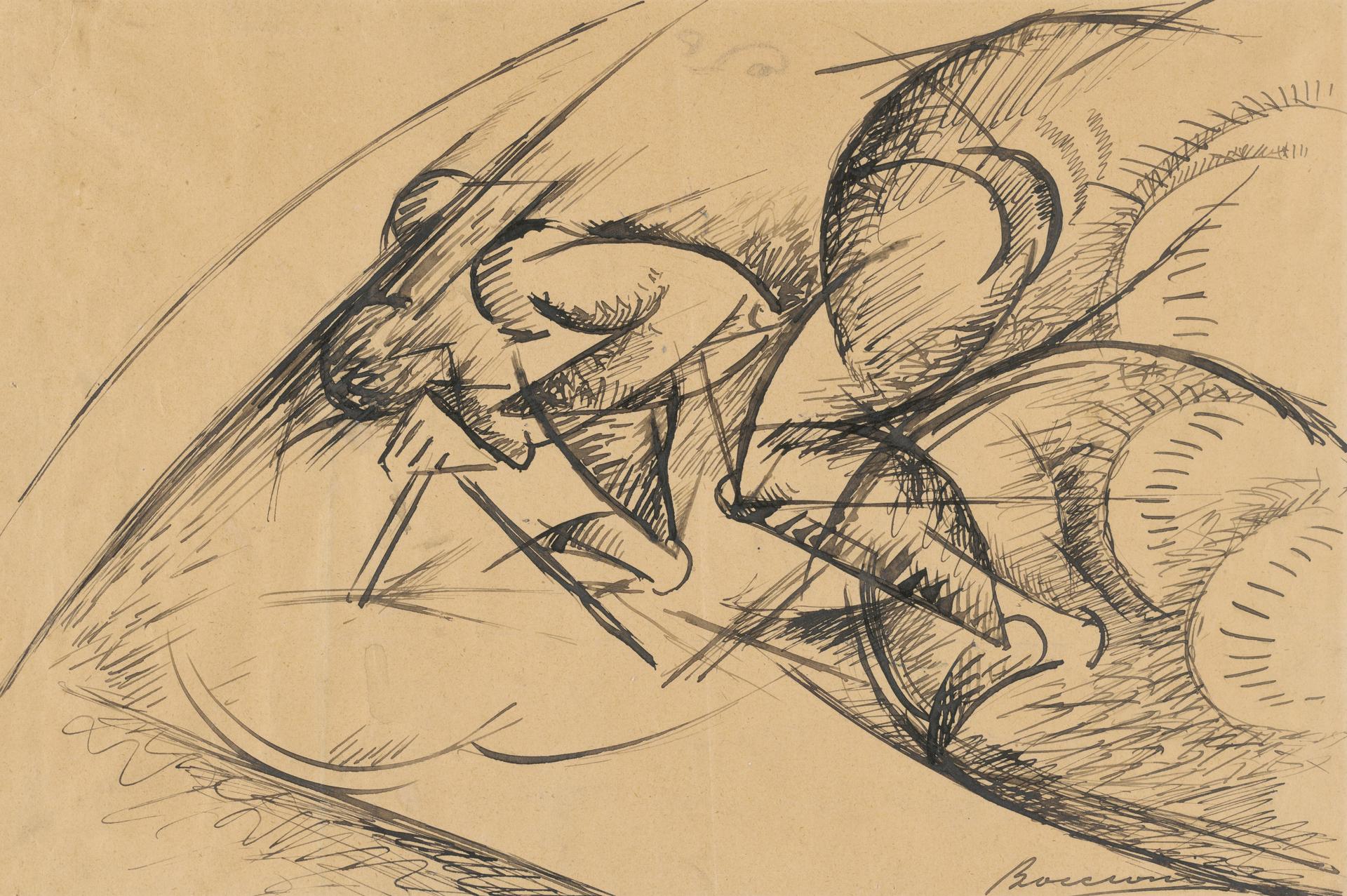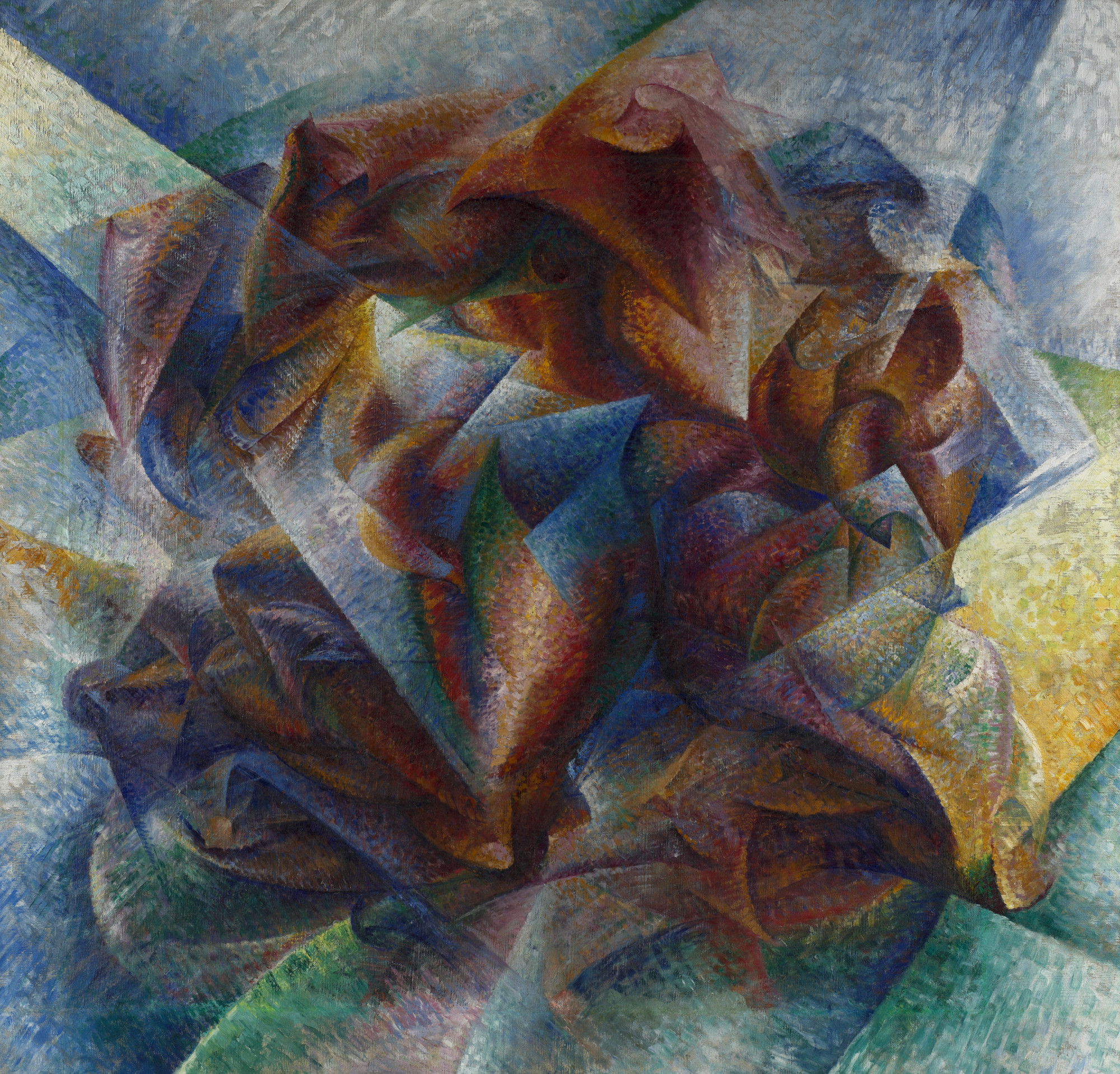Umberto Boccioni painted Dynamism of a Cyclist in the oil on canvas technique, in 1913. This painting is part of the Peggy Guggenheim Collection in Venice.

What is Depicted in the Dynamism of a Cyclist?
The painting represents a cyclist in motion. The Dynamism of a Cyclist shows how a figure or object would resolve itself if it followed the tendencies of its own forces during movement.
Dynamism of a Cyclist – Analysis
The bicycle motif is often found in futurist art. Although the bicycle has been gradually developing since the early nineteenth century, it experienced a major expansion during the 1890s. So even in the second decade of the 20th century, the bicycle retained the symbolic character of the means of transportation of modern times. The bicycle was more affordable and therefore a more widespread means of transportation compared to the automobile. It was precisely in this availability that the increasing importance of the bicycle was reflected. The bicycle became a symbol of modernity among the wider masses and the characteristic futurist symbol. The transformation of traffic, as well as the redefinition of the urban fabric, the impact of industrialization, and the dynamic modern life were important topics for the Futurists.

In 1913, Boccioni created a series of paintings dealing with issues of dynamism, one of which is the Dynamism of a Cyclist. In the Technical Manifesto of Futurist Painting, authored by Boccioni together with Carlo Carrà, Luigi Russolo, Giacomo Balla, and Gino Severini, it’s written Our growing need of truth is no longer satisfied with Form and Color as they have been understood hitherto. The gesture which we would reproduce on canvas shall no longer be a fixed moment in universal dynamism. It shall simply be the dynamic sensation itself. Indeed, all things move, all things run, all things are rapidly changing. A profile is never motionless before our eyes, but it constantly appears and disappears. On account of the persistence of an image upon the retina, moving objects constantly multiply themselves; their form changes like rapid vibrations, in their mad career. Thus a running horse has not four legs, but twenty, and their movements are triangular. The painting Dynamism of a Cyclist aimed to represent the experience of movement, that is, the dynamism of movement through time and space.

Numerous surviving sketches speak of the studious approach Boccioni had when it comes to this painting. Boccioni paid equal attention to drawing and color in Dynamism of a Cyclist. The Cubist approach to fragmentation opened up space for different variations on the theme of objects in a state of continuous flux and dynamic fusion with the space. Thus, in the case of the Dynamism of a Cyclist, we do not see the cyclist at a particular moment of the ride, but the total experience of his rapid movement, which transforms him in space and time. In addition to futurist geometrization and cubist segmentation of planes, this painting is also characterized by a vivid color palette and its distinct divisionist character.

Related Artworks
The Dynamism of a Cyclist is part of a series of paintings in which Boccini examines the dynamism of the experience of movement. The paintings Dynamism of a Soccer Player and Dynamism of a Human Body are part of the same series that was created mainly in 1913.
